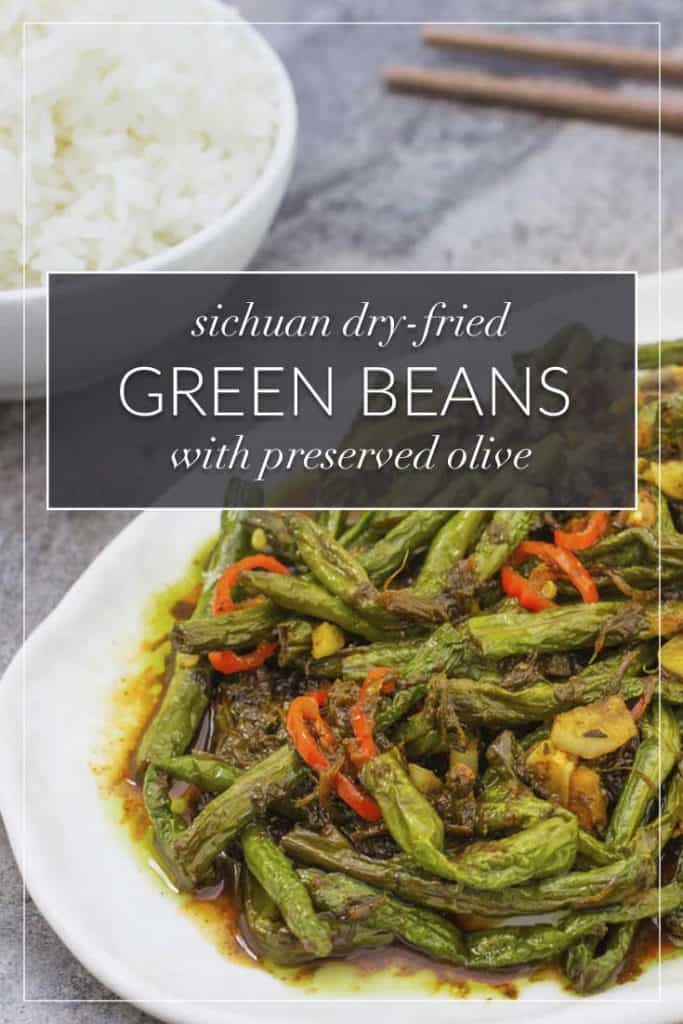During my last trip to Bangkok I visited a Chinese restaurant that sent the most extraordinary fried long beans out of its kitchen. Only a few strings came per order, so they were especially savoured and discussed over the course of the meal. The vegetables were very simply dressed with oil and seasoning sauce, so it was the cooking technique that became the focus of my interest.
Dry-Frying as a cooking technique
East Asian cooks utilise a broad set of skills with regards to cooking techniques. One of these techniques is, unsurprisingly, frying. This is the canopy description for many further and more subtle methods, however. Consider stir-frying, for example; this method could include only a splash of oil or a larger quantity, cooking over low or scorching heat, adding further liquid of varying consistencies, and various combinations of the above.
In the case of these beans, a "dry" method of stir-frying is used. This is not an intuitive description, but in Sichuan food preparation a technique known as dry-frying refers to the cooking style more than to the final dish. This is a cooking approach whereby ingredients are fried by themselves (i.e. no batter) in a moderate amount of oil until partially dehydrated and slightly browned. After the initial dry-frying step, excess oil is removed from the wok and the food(s) are briefly stir fried with a minimal portion of a strongly flavoured sauce or aromatics.
Hence "dry" is a bit of a misnomer to the uninitiated as it actually refers to dishes that are somewhat sauced.
Conversely, for the sake of reference and comparison, wet cooking methods include braising, boiling and blanching foods, prolonged baking and simmering (think hotpots), and steaming.
Preserved olive vegetable as seasoning
I began to think of other ingredients to sauce the green beans and it struck me that the underrated (at least outside of Chinese Thai communities) ingredient ga na chai would be a good addition. Made from mustard leaves, shiitake mushrooms, and a type of Chinese olive (ga na), this pungent oily mash is used in Thailand with rice porridge and rice dishes. So why not with dry-fried green beans?
I have yet to come across ga na chai outside of Thai Chinatowns, but there is a similar (it only lacks the mushrooms) and relatively easy to find alternative that works perfectly: Chinese preserved olive vegetables. There are a few different brands, but I use Peng Sheng Hong Kong Preserved Olive Vegetables (pictured). There are also other Southern Chinese brands that would work. Containers of olive vegetable are available in most well stocked Chinese supermarkets and will fast become an ingredient you reach for to add that extra punch of umami that's sometimes missing from savoury dishes.
Vegan Chinese Sichuan Style Green Beans
Be sure to check the olive vegetable for whole fruits in case of hard stones. This is a spicy, savoury dish packed with umami, with a more-ishness that is difficult to describe. Once you try this method of cooking I'm hopeful you will experiment with other saucing agents!
Ingredients
- 2 tablespoons Chinese olive vegetable (Thai ganachai)
- 2 tablespoons water
- 1 tablespoon rice vinegar
- 1 tablespoon sugar
- 1 teaspoon soy sauce
- ⅓ cup oil for deep frying
- 200 grams long beans (or green beans), ends trimmed and cut into 2-3 inch segments
- 2 cloves garlic, minced
- 1 long red chili or bird’s eye, depending on heat preference (optional), thinly sliced
Directions/Method
- First make the dressing. Combine the olive vegetable (don't forget to check for stones), water, rice vinegar, sugar, and soy sauce in a small bowl.
- Line a large plate or oven tray with kitchen roll.
- Heat a wok over high heat and then carefully pour in the oil. Wait 30 seconds or so for the oil to heat and then add the green beans. Stir fry for 5-8 minutes, until the green beans are wrinkled but not overly browned.
- Remove the beans with a slotted spoon to drain on the kitchen roll. Pat off any excess oil.
- Drain all but a tablespoon of oil from the wok. Tip in the garlic and chilli and stir fry for a few seconds until the garlic is fragrant and starting to brown. Add the beans back to the wok, along with the sauce. Give it a good mixing and tossing. Transfer to a bowl or plate and serve hot with steamed rice.
- Author: Kip Dorrell
- Serves: 2-3, with rice
- Cuisine: Sichuan Chinese
